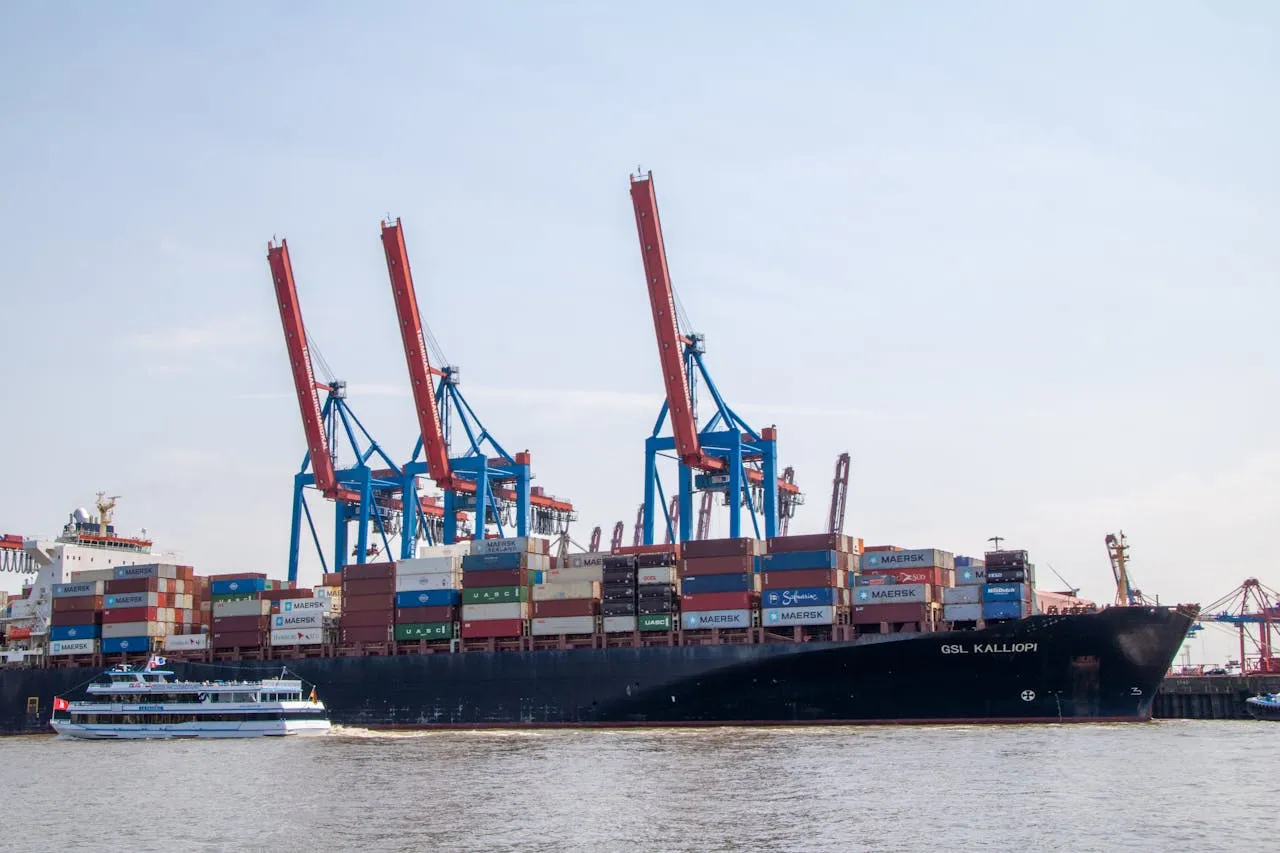
Timeline of key developments: Transforming U.S. shipbuilding
2021–2023: Policy foundations for industrial resilience
The foundation for revitalizing U.S. shipbuilding began with key policy shifts. In 2021, the “Made in America” executive order emphasized domestic procurement, creating incentives for investment in U.S.-based manufacturing and infrastructure. This policy period saw growing bipartisan support for industrial resilience, positioning shipbuilding as essential not just for defense but also for economic independence.
A critical step during this period was the allocation of over $703 million through the Maritime Administration’s Port Infrastructure Development Program in 2022. Funded under the Bipartisan Infrastructure Law (BIL), also called the Infrastructure Investment and Jobs Act (IIJA), these investments aimed to modernize ports and freight infrastructure to accommodate contemporary marine freight vessels. By strengthening the ports and logistics network, the U.S. bolstered both commercial shipping capacity and national supply chain security.
Early 2025: Federal legislative and executive momentum
In March 2025, the federal government announced the creation of an Office of Shipbuilding alongside new tax incentives for maritime manufacturing. Shortly thereafter, a “Maritime Action Plan” was issued via executive order, authorizing federal agencies to invest directly in logistics infrastructure and shipbuilding facilities. These initiatives were part of a broader dual-use shipyard strategy designed to serve both defense and energy transport sectors.
Congress also reintroduced the SHIPS Act, which aims to reinforce U.S. shipbuilding by funding a “strategic commercial fleet” of 250 U.S.-built, U.S.-flag vessels through guaranteed contracts. The legislation includes provisions to modernize shipyard financing programs and enhance workforce training, reflecting a comprehensive strategy to strengthen the maritime industrial base while supporting economic and national security goals.
June–July 2025: Renewed public and private investment
By mid-2025, industrial trade policies were further aligned with domestic shipbuilding goals. The Office of the U.S. Trade Representative (USTR) proposed that starting in April 2028, at least 1% of U.S. LNG exports be transported on U.S.-flagged ships, with the requirement increasing over time to include U.S.-built vessels. This measure is intended to create predictable demand for U.S.-built LNG carriers, a sector largely dormant for decades, and to stimulate domestic ship manufacturing.
In July, the Department of Transportation announced $8.75 million in grants to support ship modernization, emphasizing the importance of commercial shipyard capacity in reinforcing both economic and defense capabilities.
The U.S. shipbuilding sector also benefits from international collaboration. Following summit talks between U.S. and South Korean leaders, South Korea pledged a $150 billion fund to expand bilateral shipbuilding cooperation. Hanwha Philly Shipyard is expected to be a central player in this partnership, bridging domestic and international capabilities.
Hanwha Philly Shipyard: Private investment powering U.S. shipbuilding
Private investment is playing a pivotal role in revitalizing U.S. shipbuilding. In July 2024, Hanwha Ocean signed a five-year Master Ship Repair Agreement with the U.S. Navy, completing several maintenance, repair, and overhaul projects. In December 2024, Hanwha acquired Philly Shipyard for $100 million. With a legacy of building over half of all Jones Act-compliant large vessels since 2000, the shipyard is now a cornerstone of Hanwha’s U.S. maritime strategy.
In August 2025, Hanwha announced a $5 billion infrastructure investment plan for Philly Shipyard. This expansion includes two new docks, three quays, and the potential construction of a new block assembly facility. Alongside capacity growth, the plan emphasizes workforce development to train skilled shipbuilders and strengthen the U.S. industrial base. Hanwha intends to increase production from roughly one ship per year to as many as twenty, directly supporting U.S. objectives to rebuild competitive shipbuilding capacity.
The shipyard has already begun delivering results. In July 2025, Hanwha Philly Shipyard received the first U.S. commercial LNG carrier order in nearly fifty years. Hanwha Shipping exercised an option for a second LNG carrier and ordered ten medium-range oil and chemical tankers. The first MR tanker is expected for delivery in 2029, marking the largest and highest-value commercial vessel order for U.S. shipyards in more than two decades.
Through projects like these, Hanwha Philly Shipyard exemplifies the synergy between private investment and national policy. Its operations—including LNG carriers, naval modules, and eventually naval vessels—demonstrate a revitalized American shipbuilding industry poised to meet both commercial and defense needs for decades to come.




